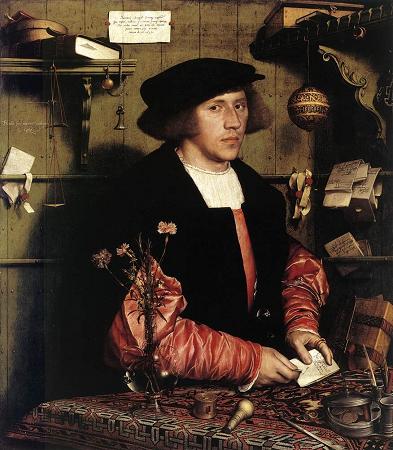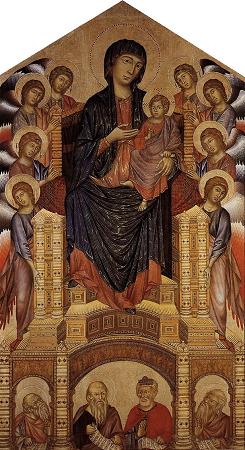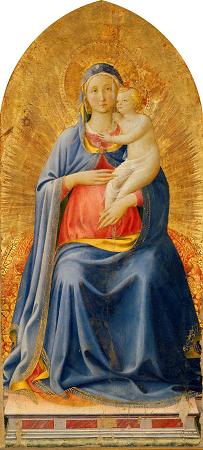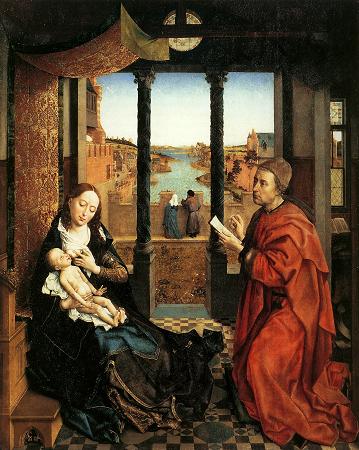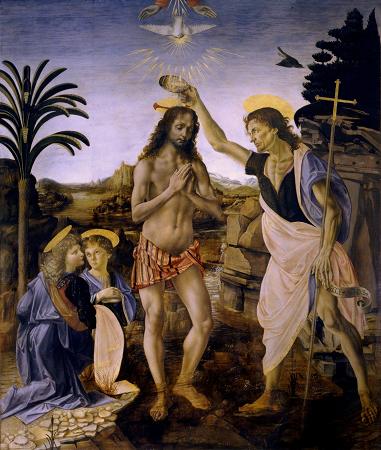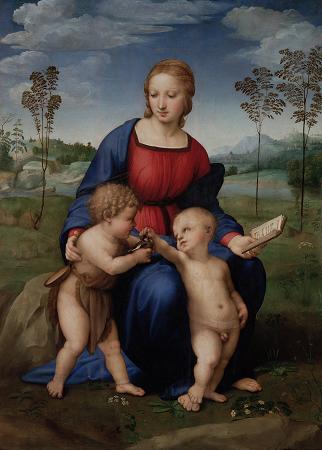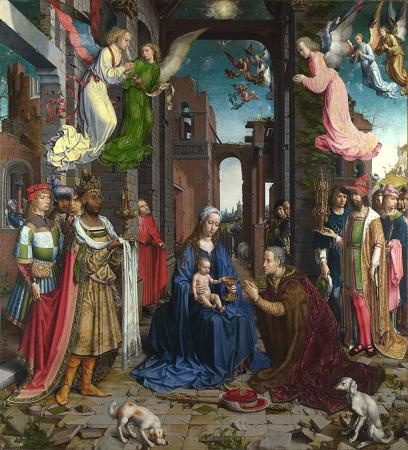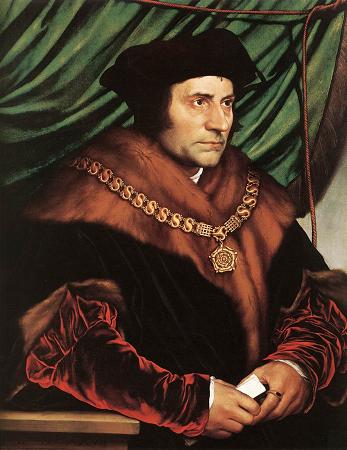Panel Painting. Wood panel, a solid support traditionally made from oak or poplar, has been used for paintings throughout art history. Prized for its smooth and stable surface, wood panel allows artists to create meticulous details and achieve seamless transitions between colors. Notable works on panel from the 15th century include Jan van Eyck's Arnolfini Marriage (1434, National Gallery, London) and Sandro Botticelli's Primavera (c1482, Uffizi). Painted in the 16th century were Leonardo da Vinci's Mona Lisa (c1505, Louvre), Hieronymus Bosch's Garden of Earthly Delights (c1513, Prado) and Parmigianino's Lucretia (1540, Museo di Capodimonte). Wood panel continued to be used in the 17th and 18th centuries for works like Peter Rubens' Battle of Amazons (c1618, Alte Pinakothek, Munich), Cornelis van Poelenburgh's Feast of Gods (1623, Wadsworth Atheneum, Hartford) and Louise Elisabeth Vigee Le Brun's Vicomtesse de Vaudreuil (1785, Getty Museum). Well-known panel paintings from the 19th century include Stonebreaker and Daughter by Edwin Landseer (1830, Victoria and Albert Museum) and Suitor by Edouard Vuillard (1883, Smith College Museum of Art). Although wood panel works became less common the 20th century, Karl Schmidt-Rottluff painted Garden in 1906 (sold by Christie's, June 24, 2008). Despite its susceptibility to warping and cracking over time, as evident in some restorations, wood panel remains a cherished medium in painting due to its rich history and unique aesthetic qualities. Until canvas became the more popular support medium in the 16th century, it was the normal form of support for a painting not on a wall or vellum, which was used for miniatures in illuminated manuscripts and paintings for the framing. Panel painting is very old; it was a very prestigious medium in Greece and Rome, but only very few examples of ancient panel paintings have survived. A series of 6th century BC painted tablets from Pitsa represent the oldest surviving Greek panel paintings. Most classical Greek paintings that were famous in their day seem to have been of a size comparable to smaller modern works-perhaps up to a half-length portrait size. However, for a generation in the second quarter of the fifth-century BC there was a movement, called the new painting and led by Polygnotus, for very large painted friezes, apparently painted on wood, decorating the interiors of public buildings with very large and complicated subjects containing numerous figures at least half life-size, and including battle scenes. We can only attempt to imagine what these looked like from some detailed literary descriptions and vase-paintings that appear to echo their compositions. The first century BC to third century AD Fayum mummy portraits, preserved in the exceptionally dry conditions of Egypt, provide the bulk of surviving panel painting from the Imperial Roman period-about 900 face or bust portraits survive. The Severan Tondo, also from Egypt is one of the handful of non-funerary Graeco-Roman specimens to survive. Wood has always been the normal support for the Icons of Byzantine art and the later Orthodox traditions, the earliest of which date from the 5th or 6th centuries, and are the oldest panel paintings which seem to be of the highest contemporary quality. Encaustic and tempera are the two techniques used in antiquity. Encaustic largely ceased to be used after the early Byzantine icons.
more...
